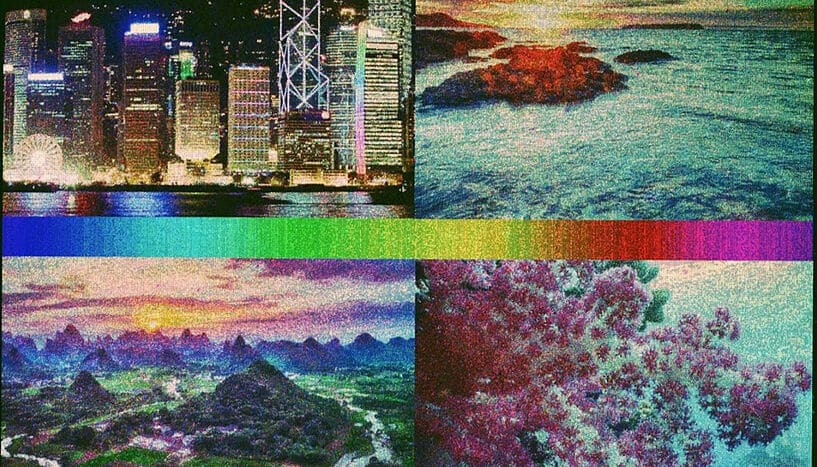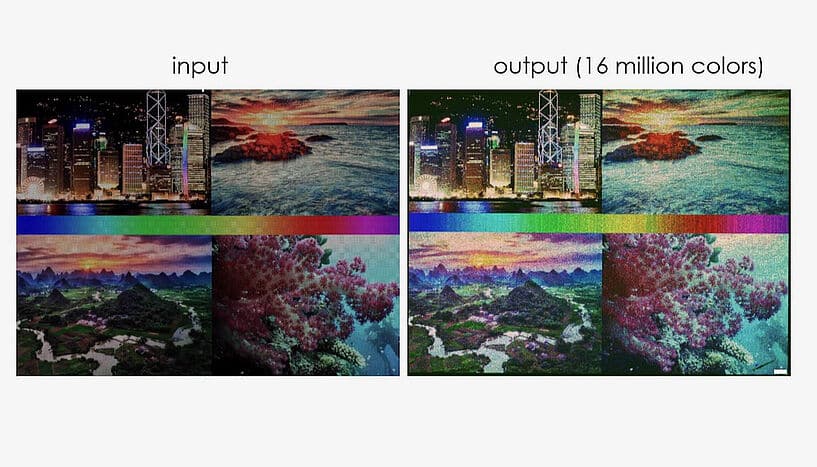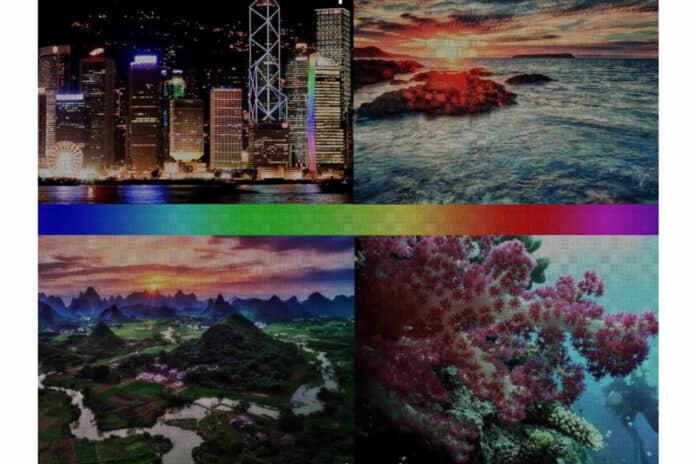Scientists at the University of Vienna have found a way to ‘paint’ with DNA and to accurately reproduce any digital image on a miniature 2D surface with 24-bit color depth. Scientists have successfully created fluorescent duplexes that can generate any 16 million colors. Through this, they surpassed the previous 256 color limitation.
The two DNA molecules that comprise the DNA double helix have complementary sequences. In the laboratory, the duplex’s stability can be adjusted by adjusting the quantity and placement of defective complementary sequences. The duplex is visible due to fluorescent markers linked to one of the matching DNA strands, and the intensity of the fluorescence increases as the stability of the duplex increases.
The biochemical process of reading and duplicating genes is based on complementary DNA sequences’ unique capacity to identify and assemble as duplexes. Because the principles governing duplex formation, also known as hybridization, are straightforward and unchanging, they can also be predicted and programmed. Programming DNA hybridization makes building large-scale nanostructures and assembling synthetic genes possible. There is always a need for perfect sequence complementarity in this process.

Programming instability has applications in DNA and RNA therapies, dramatically increasing the ability to modify molecular structure.
In this study, scientists showed that controlled hybridization can create 16 million colors and accurately reproduce any digital image in DNA format.
A long complementary DNA strand on the surface is hybridized with various short DNA strands connected to fluorescent molecules (markers) that produce red, green, or blue color to create color. The stability of the duplex is reduced by carefully deleting nucleotides from the DNA strand at specific points along the sequence to change the intensity of each color. A darker shade is produced via reduced stability; when this stability is adjusted, 256 shades are made for each color channel. A single DNA duplex allows mixing and matching all colors, producing 16 million possible combinations and fitting the color complexity of contemporary digital images.

To achieve this level of precision in DNA-to-color conversion, > 45,000 unique DNA sequences had to be synthesized.
To do so, the research team used a method for parallel DNA synthesis called maskless array synthesis (MAS). With MAS, hundreds of thousands of unique DNA sequences can be synthesized simultaneously and on the same surface, a miniature rectangle the size of a fingernail. Since the approach allows the experimenter to control the location of any DNA sequence on that surface, the corresponding color can also be selectively assigned to a chosen area.
The authors could transform any digital image into a DNA photocopy with accurate color rendition by automating the process using dedicated computer scripts.
Jory Lietard, PI in the Institute of Inorganic Chemistry, said, “Essentially, our synthesis surface becomes a canvas for painting with DNA molecules at the micrometer scale.”
Tadija Kekić, PhD candidate in the group of Jory Lietard said, “Resolution is currently limited to XGA, but the reproduction process applies to 1080p, as well as potentially 4K image resolution. Beyond imaging, a DNA color code could have beneficial applications in data storage on DNA.”
Journal Reference:
- T. Kekić, J. Lietard: A Canvas of Spatially Arranged DNA Strands that Can Produce 24-bit Color Depth. Journal of the American Chemical Society. Published online October 4, 2023. DOI: 10.1021/jacs.3c06500
